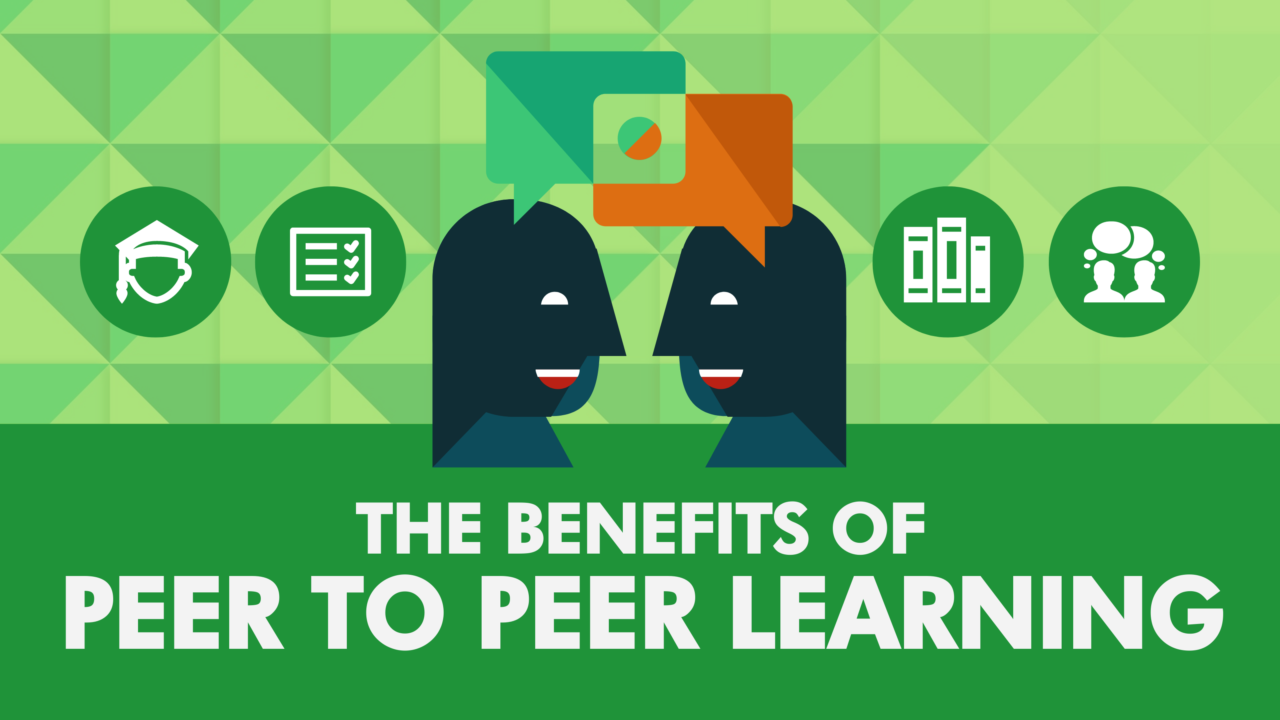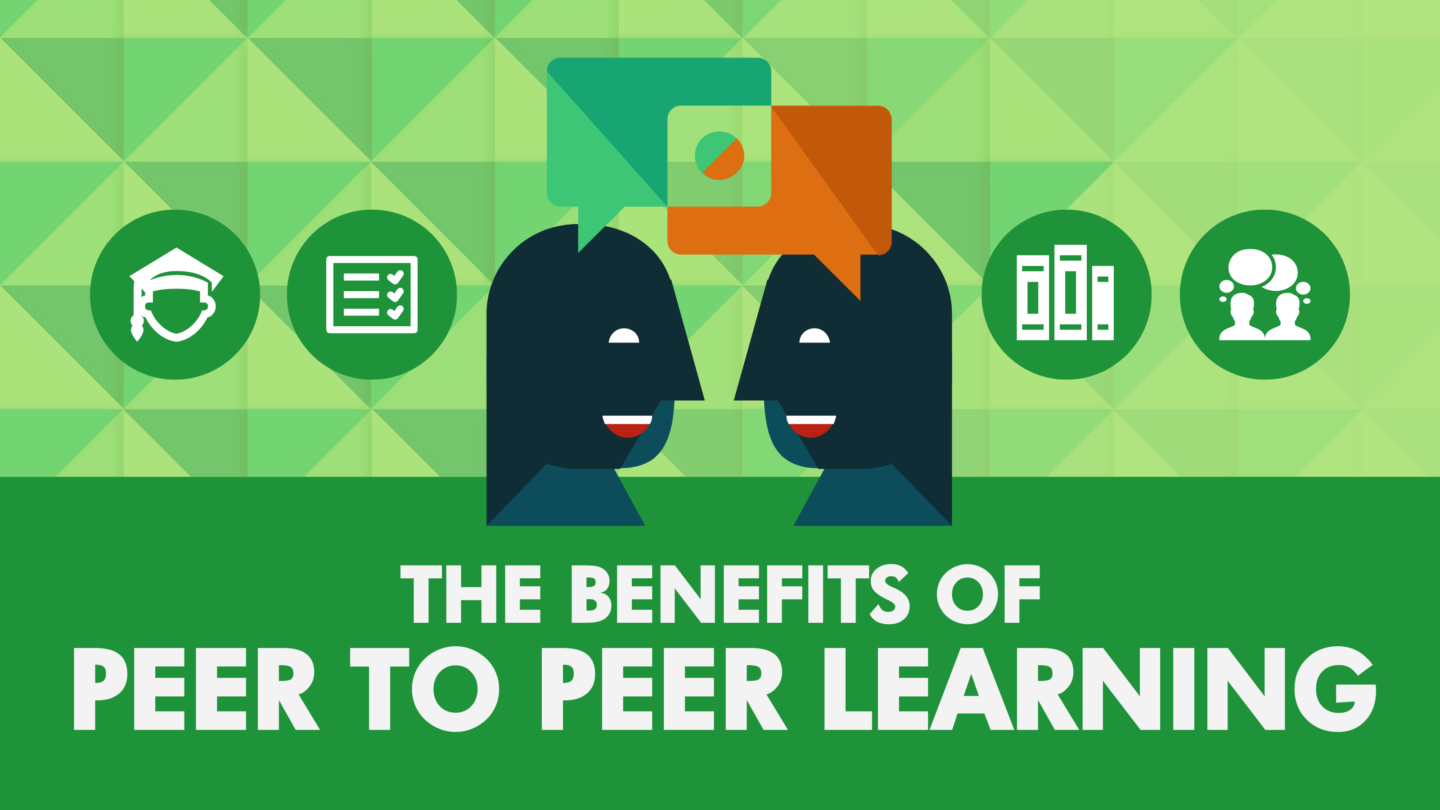
The Benefits of Peer to Peer learning
When there is a required need for specific skill development and/or knowledge transfer within any organization, the usual solution is to hire a subject matter expert who will ultimately serve as a consultant and/or trainer. However, there is another effective approach to impart knowledge: peer to peer learning.
What is peer to peer learning?
Peer to peer learning is exactly what it sounds like – that is, employees teaching other employees certain skills, or passing on knowledge pertaining to a specific subject. While it can take on many different forms, the common factor in peer to peer learning situations is that the information isn’t shared by an instructor, or anyone else in a position of authority. Peer to peer learning is coworkers – that is, employees on the same hierarchical level – teaching each other what they know. This can take place in a group setting, or one-on-one. For example:
- Two customer service representatives work for a company that recently switched their class-enrollment system to a brand new one. One of the CSRs picks up the process of creating new student accounts very quickly, and becomes an expert at it. The second CSR was on vacation when the new system rolled out, and are a little behind on the training videos. The two CSRs are scheduled on a shift together, and the first one takes some time to teach the second CSR how to efficiently create a new student account. This is a great example of one-on-one peer to peer learning.
- Suppose then that the same CSRs have a group chat, and it becomes evident that almost no one understands how to properly print receipts for customers. One person (possibly CSR 1 from the above example) takes initiative and outlines a step-by-step process, and sends it to the whole group to learn. This is group peer to peer learning.
There are many examples of peer to peer learning – these are just two examples of relatively informal interactions. Peer to peer learning is flexible and can be as formal or informal as you want. Regardless of how you run it, the benefits of peer to peer learning are undeniable.
What are the benefits of peer to peer learning?
Think of it this way: if an issue crops up that your team needs help to handle, would you rather be trained by an external consultant who has very little understanding or perhaps even empathy of your work challenges or a peer who has had to deal with and resolve the same or similar problem you’re currently facing?
Not only is peer to peer learning an effective way to transfer knowledge among coworkers, but it will also serve as a cost-containing exercise in not having to hire external experts each time there is a knowledge gap in your organization. Additional benefits:
- Common experiences: since the person teaching and the person learning are peers working at a similar level, they will have shared experiences that can make learning easier
- Practice makes perfect: employees who have to deal with an issue on a consistent basis will be better able to explain more readily
- Sharing is caring: when coworkers teach/learn from each other, they build more of a bond. This helps build trust and respect moving forward and increased camaraderie
- Employee comfort: employees will be much more at ease with peer to peer learning vs an external resource. It allows them to build strong connections with each other based on the collective sharing of knowledge.
Now that we know what peer to peer learning is, as well as how it is beneficial to a company, what are the best ways to facilitate it in your workplace?
How to effectively facilitate peer to peer learning
One of the most effective ways to use peer to peer learning in your company is to encourage social learning. This essentially means learning by watching your peers, interacting with them, and following their lead when performing tasks. This is a highly effective form of learning as it is relatively informal, while being low pressure and levels of high-engagement.
It’s also important to let employees drive their own learning whenever possible. This doesn’t mean not having structures in place, but peer to peer learning is a great opportunity to give employees control over what they’re learning, and how. This will empower them to make the most of their training, and will also help keep them more engaged.
As we mentioned above, there are many ways to employ peer to peer learning. Here are a few common examples.
Mentoring
Mentors are great at helping newer employees solve problems, as they’ve likely come across them before. They also aren’t an expert focused on one specific area – they will have a general working knowledge of everything the job requires, and as such, will be able to help with most issues. Strong and present mentors are a huge benefit for workplaces, as they not only help solve work-related problems more effectively, but build solid internal relationships.
Lunch n’ Learn
This is a relatively simple and fairly common approach. Periodically (weekly, monthly, even quarterly) schedule a hosted lunch that depending on the topic, looks to invite employees from a specific team. One person will provide a presentation and / or facilitate a discussion on the topic provided, ideally transferring knowledge or information.
Learning Management Systems
Setting up a training platform that gives employees access to required learning materials can be an extensive and sometimes costly undertaking. Depending upon the direction taken, whether it be repository-driven or interactive e-learning module-based, a well-designed LMS can house presentations, documents, processes materials, etc. providing immediate access for employees in an on-demand format.
Final thoughts
While your first thought may be that experts hired externally are the best way to impart knowledge, consider peer to peer learning. It offers many benefits, from easier learning, to monetary savings, and is easily implemented in your company, whatever the size.




